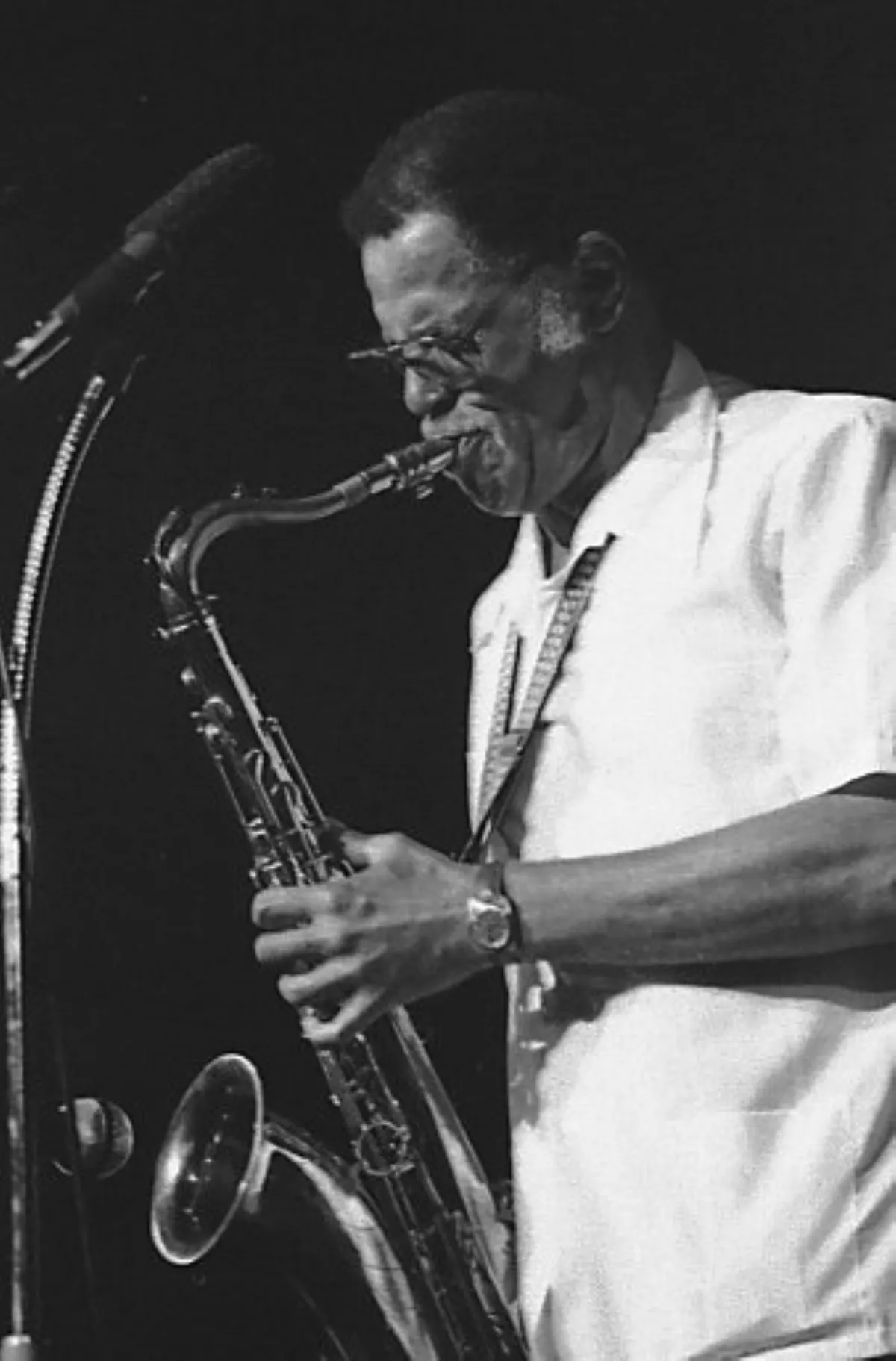 1.
1. Dexter Gordon was an American jazz tenor saxophonist, composer, and bandleader.

 1.
1. Dexter Gordon was an American jazz tenor saxophonist, composer, and bandleader.
Dexter Gordon was among the most influential early bebop musicians.
Dexter Gordon inserted musical quotes into his solos, with sources as diverse as "Happy Birthday" and well-known melodies from the operas of Wagner.
Dexter Gordon, in turn, was an early influence on John Coltrane and Sonny Rollins.
Rollins and Coltrane then influenced Dexter Gordon's playing as he explored hard bop and modal playing during the 1960s.
Dexter Gordon was an advocate of playing to communicate with the audience, which was his musical approach as well.
Dexter Gordon was nominated for an Academy Award for Best Actor in a Leading Role for his performance in the Bertrand Tavernier film Round Midnight, and he won a Grammy for Best Jazz Instrumental Performance, Soloist, for the soundtrack album The Other Side of Round Midnight.
Dexter Gordon had a cameo role in the 1990 film Awakenings.
In 2018, Dexter Gordon's album Go was selected by the Library of Congress for preservation in the National Recording Registry for being "culturally, historically, or aesthetically significant".
Dexter Keith Gordon was born on February 27,1923, in Los Angeles, California.
Dexter Gordon began his study of music with the clarinet at the age of 13, then switched to the alto saxophone at 15, and finally to the tenor saxophone at 17.
Dexter Gordon studied with multi-instrumentalist Lloyd Reese while attending Thomas Jefferson High School, and studied with the school's band director, Sam Browne.
Between December 1940 and 1943, Dexter Gordon was a member of Lionel Hampton's band, playing in a saxophone section alongside Illinois Jacquet and Marshal Royal.
In late 1945, Dexter Gordon was recording under his own name for the Savoy label.
Dexter Gordon returned to Los Angeles in late 1946 and in 1947 was leading sessions for Ross Russell's Dial label.
In December 1947, Gordon recorded again with the Savoy label.
Dexter Gordon made a concert appearance with Wardell Gray in February 1952 and appeared as a sideman in a session led by Gray in June 1952.
Dexter Gordon was one of the initial sax players for the Onzy Matthews big band in 1959, along with Curtis Amy.
Dexter Gordon continued to champion Matthews' band after he left Los Angeles for New York, but left for Europe before getting a chance to record with that band.
Dexter Gordon recorded The Resurgence of Dexter Gordon in 1960.
Dexter Gordon appeared as a member of Art Hazzard's band in the film Young Man with a Horn.
Dexter Gordon appeared in an uncredited and overdubbed role as a member of a prison band in the movie Unchained, filmed inside Chino.
Dexter Gordon was a saxophonist performing Freddie Redd's music for the Los Angeles production of Jack Gelber's play The Connection in 1960, replacing Jackie McLean.
Dexter Gordon contributed two compositions, Ernie's Tune and I Want More to the score and later recorded them for his album Dexter Calling.
Dexter Gordon initially commuted from Los Angeles to New York to record, but took up residence when he regained the cabaret card that allowed him to perform where alcohol was served.
The stay in New York turned out to be shortlived, as Dexter Gordon got offers for engagements in England, then Europe, that resulted in a fourteen-year stay.
Dexter Gordon found Europe in the 1960s a much easier place to live, saying that he experienced less racism and greater respect for jazz musicians.
Dexter Gordon stated that on his visits to the US in the late 1960s and early 1970s, he found the political and social strife disturbing.
Dexter Gordon switched from Blue Note to Prestige Records.
In 1975, Dexter Gordon signed an exclusive recording contract with Danish label SteepleChase, for which he recorded some of his most inspired sessions including The Apartment, More Than You Know, Stable Mable, Swiss Nights Vol.
Dexter Gordon returned to the United States for good in 1976.
Dexter Gordon recorded the studio albums Sophisticated Giant with an eleven piece big band in 1977 and Manhattan Symphonie with the Live at Keystone Corner crew in 1978.
In 1978 and 1980, Dexter Gordon was the DownBeat Musician of the Year, and in 1980 he was inducted into the Jazz Hall of Fame.
Dexter Gordon remained a popular attraction at concerts and festivals, although his live appearances and recording dates would soon become infrequent.
Dexter Gordon starred in the 1986 movie Round Midnight as "Dale Turner", an expatriate jazz musician in Paris during the late 1950s based loosely on Lester Young and Bud Powell.
Dexter Gordon was a sideman on Tony Bennett's 1987 album, Berlin.
Dexter Gordon died of kidney failure and smoking-related cancer of the larynx in Philadelphia, on April 25,1990, at the age of 67.
Dexter Gordon's uncle, Clifford Myota Dexter Gordon, was a charter member of the Alpha Delta chapter of Alpha Phi Alpha fraternity, seated at the University of Southern California.
When he lived in Denmark, Dexter Gordon became friends with the family of the future Metallica drummer Lars Ulrich, and subsequently became Lars's godfather.
Dexter Gordon was married three times and had six children: Robin, James, Deirdre, Mikael, Morten and Benjamin.
Dexter Gordon bought a Selmer Mark VI from Ben Webster after he lost his 10M during the trip to Paris.